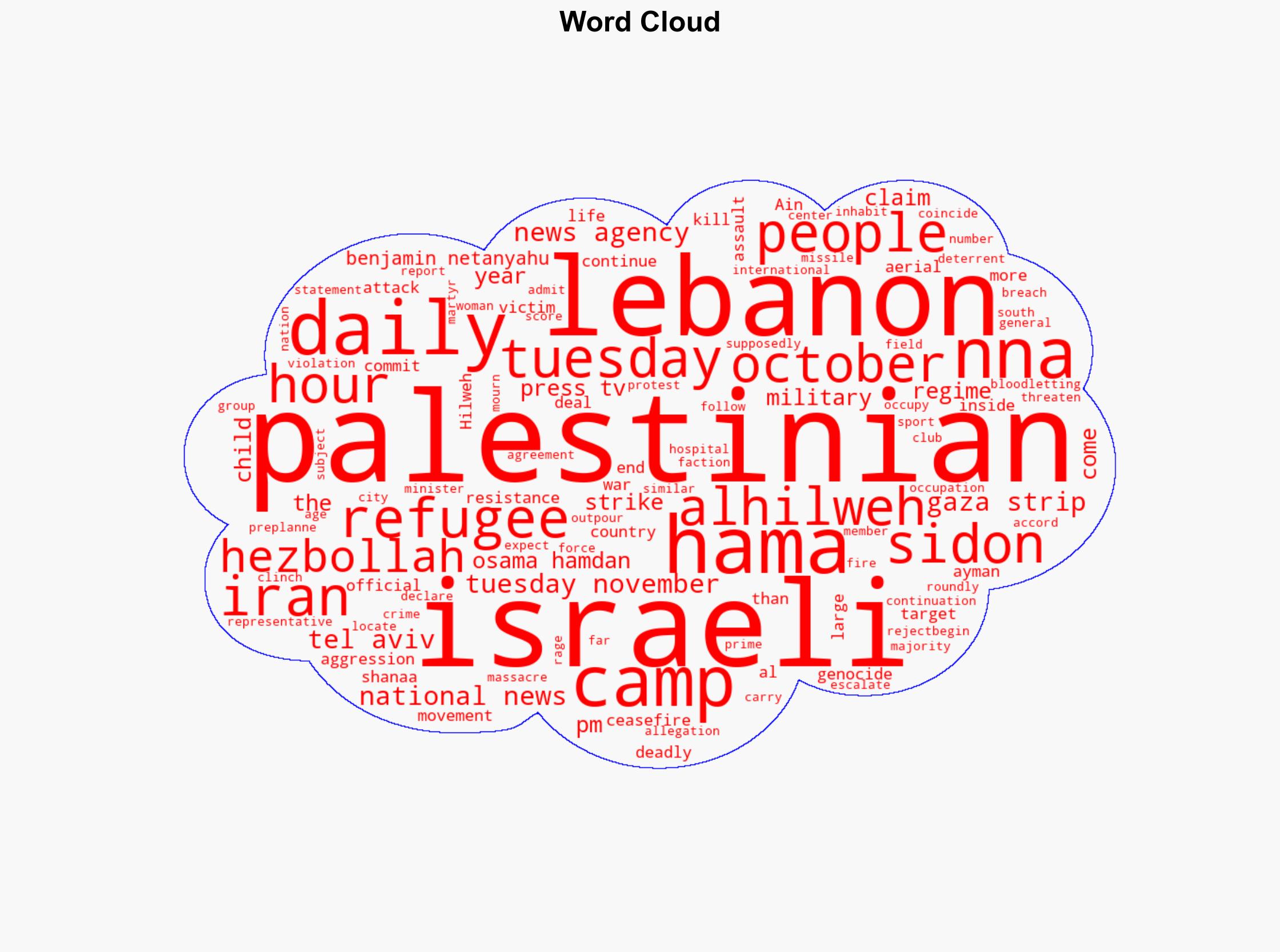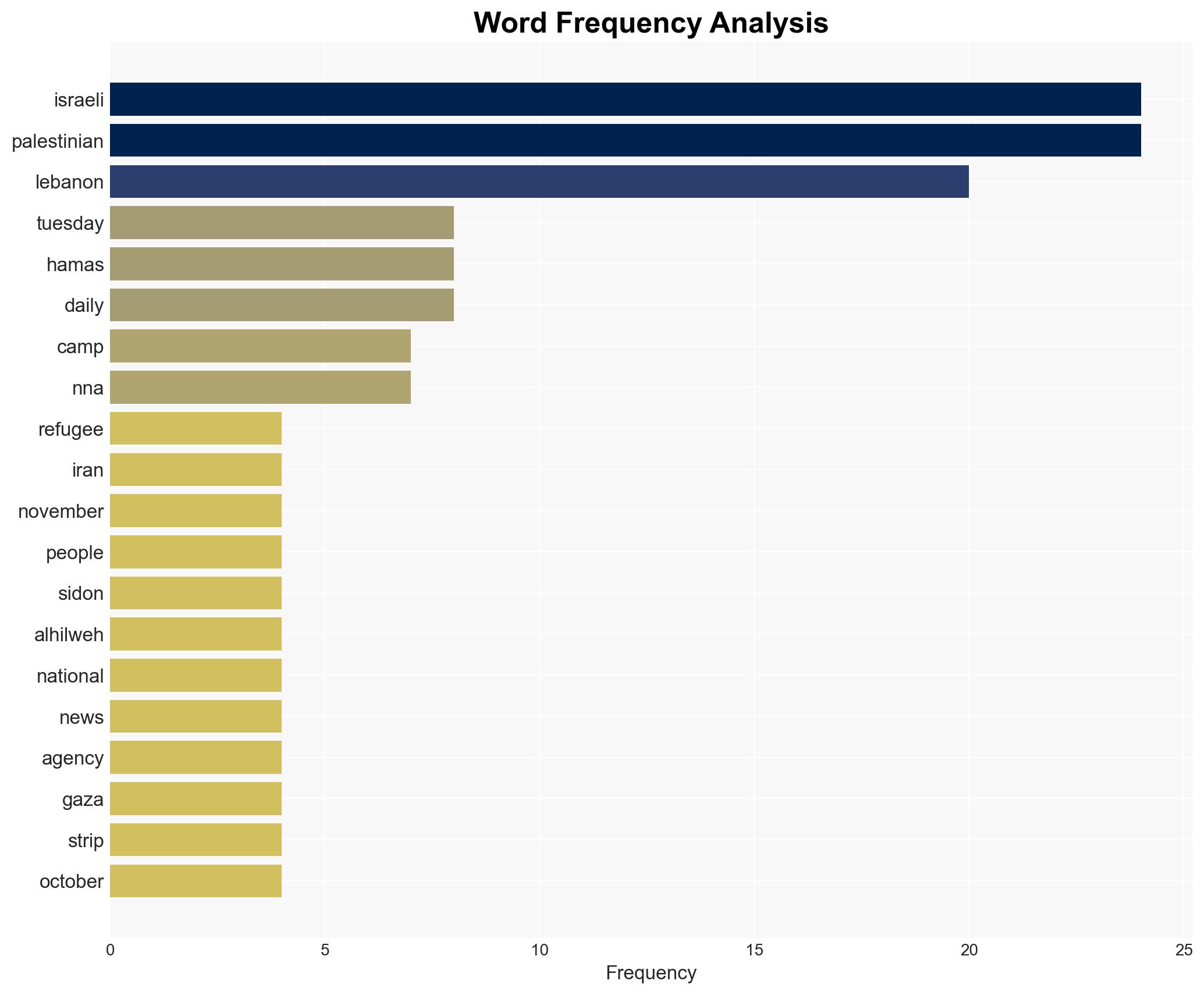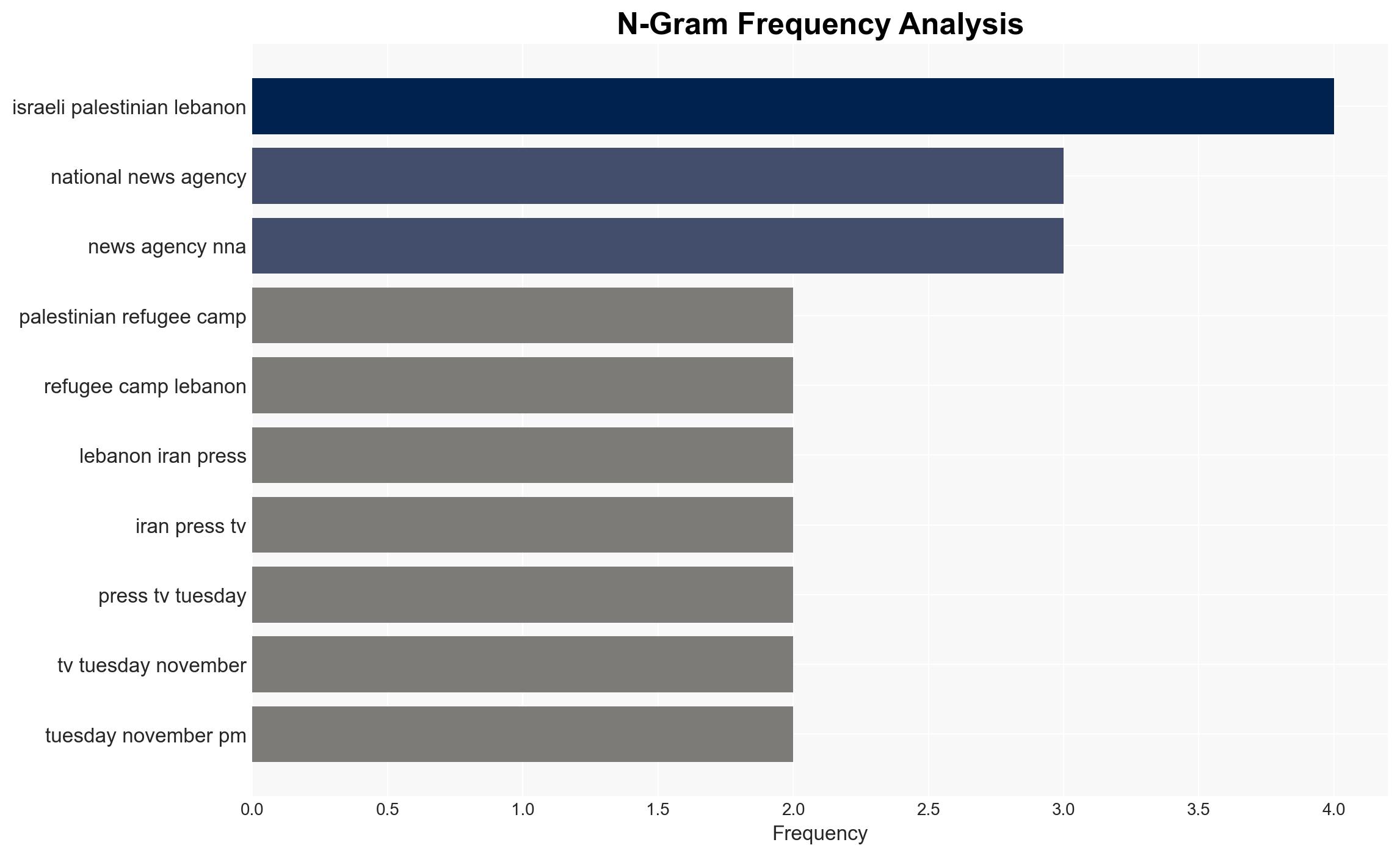Israeli aerial assault kills 15 at Palestinian refugee camp in S Lebanon – Globalsecurity.org
Published on: 2025-11-19
AI-powered OSINT brief from verified open sources. Automated NLP signal extraction with human verification. See our Methodology and Why WorldWideWatchers.
Intelligence Report: Israeli Aerial Assault on Palestinian Refugee Camp in South Lebanon
1. BLUF (Bottom Line Up Front)
The most supported hypothesis is that the Israeli aerial assault on the Ain al-Hilweh refugee camp was a targeted military operation against perceived Hamas operatives, albeit with significant collateral damage. Confidence in this assessment is moderate due to conflicting reports and potential biases in source material. Recommended actions include diplomatic engagement to de-escalate tensions and a thorough investigation into the incident to clarify facts and responsibilities.
2. Competing Hypotheses
Hypothesis 1: The Israeli assault was a deliberate military operation targeting Hamas operatives within the Ain al-Hilweh camp, consistent with Israel’s stated policy of preemptive strikes against perceived threats.
Hypothesis 2: The assault was a disproportionate response or a miscalculated military action, resulting in significant civilian casualties, potentially exacerbated by faulty intelligence or misidentification of targets.
Hypothesis 1 is more likely given Israel’s historical pattern of targeted strikes against Hamas and other militant groups. However, the high civilian toll raises questions about the accuracy of intelligence and the proportionality of the response.
3. Key Assumptions and Red Flags
Assumptions include the reliability of Israeli military intelligence and the intent behind the operation. Red flags involve potential bias in reporting from sources like Iran Press TV, which may have an anti-Israel slant, and the possibility of misinformation from involved parties. The absence of independent verification of claims from both sides is a significant gap.
4. Implications and Strategic Risks
The incident risks escalating tensions between Israel and Lebanon, potentially drawing in Hezbollah and increasing regional instability. Politically, it could strain Israel’s relations with international allies and fuel anti-Israel sentiment globally. Economically, continued conflict may disrupt regional markets. Informationally, the narrative battle could intensify, influencing public opinion and policy decisions.
5. Recommendations and Outlook
- Engage in diplomatic efforts with Lebanon and international bodies to de-escalate tensions and prevent further violence.
- Conduct an independent investigation to ascertain facts and accountability, potentially involving neutral third-party observers.
- Best-case scenario: Successful de-escalation and renewed ceasefire agreements.
- Worst-case scenario: Escalation into broader conflict involving Hezbollah and other regional actors.
- Most-likely scenario: Continued low-level skirmishes and diplomatic tensions without full-scale escalation.
6. Key Individuals and Entities
Benjamin Netanyahu (Israeli Prime Minister), Osama Hamdan (Hamas representative in Lebanon), Ayman Shanaa (Hamas official).
7. Thematic Tags
Counter-Terrorism, Middle East Conflict, International Relations, Humanitarian Impact
Structured Analytic Techniques Applied
- ACH 2.0: Reconstruct likely threat actor intentions via hypothesis testing and structured refutation.
- Indicators Development: Track radicalization signals and propaganda patterns to anticipate operational planning.
- Narrative Pattern Analysis: Analyze spread/adaptation of ideological narratives for recruitment/incitement signals.
Explore more:
Counter-Terrorism Briefs ·
Daily Summary ·
Support us





